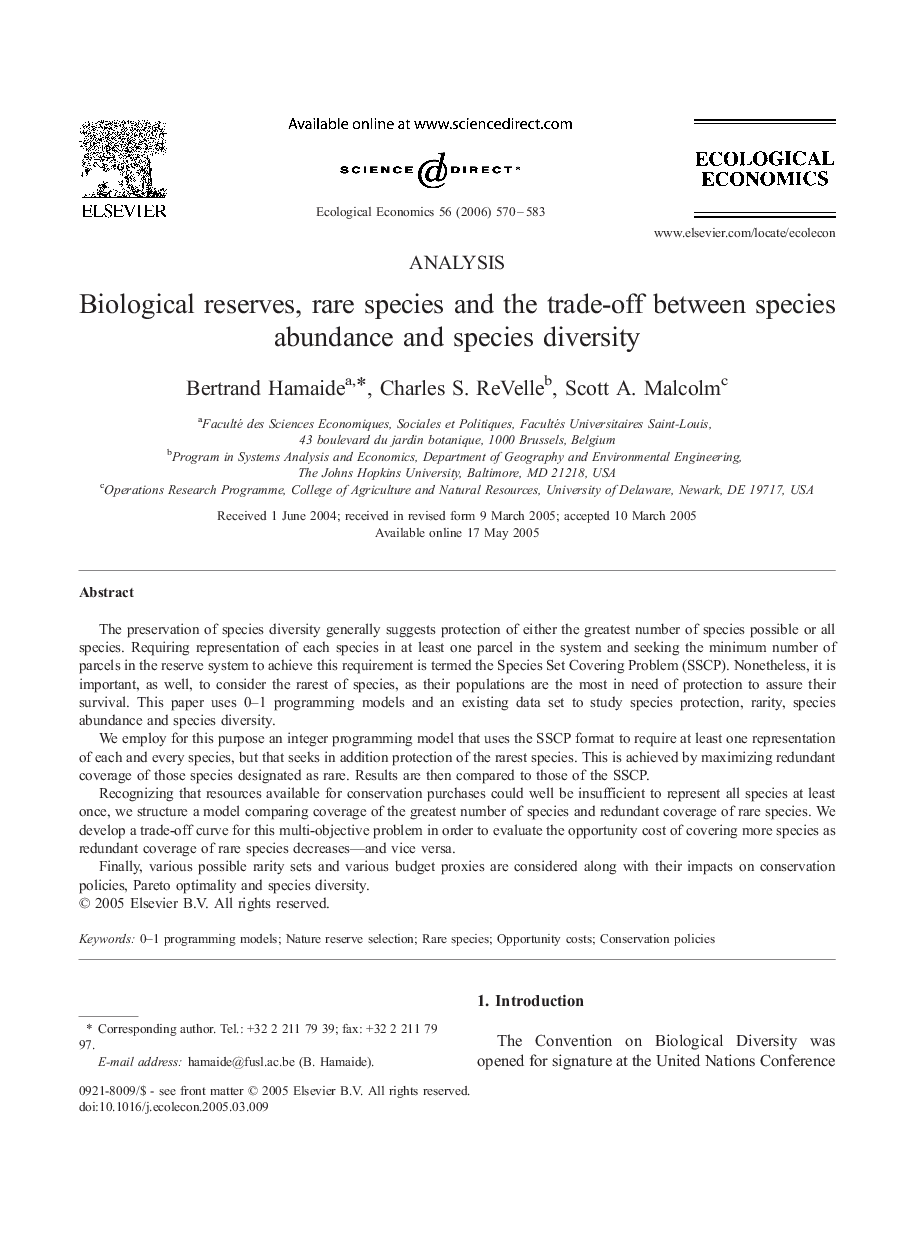| Article ID | Journal | Published Year | Pages | File Type |
|---|---|---|---|---|
| 5052588 | Ecological Economics | 2006 | 14 Pages |
The preservation of species diversity generally suggests protection of either the greatest number of species possible or all species. Requiring representation of each species in at least one parcel in the system and seeking the minimum number of parcels in the reserve system to achieve this requirement is termed the Species Set Covering Problem (SSCP). Nonetheless, it is important, as well, to consider the rarest of species, as their populations are the most in need of protection to assure their survival. This paper uses 0-1 programming models and an existing data set to study species protection, rarity, species abundance and species diversity.We employ for this purpose an integer programming model that uses the SSCP format to require at least one representation of each and every species, but that seeks in addition protection of the rarest species. This is achieved by maximizing redundant coverage of those species designated as rare. Results are then compared to those of the SSCP.Recognizing that resources available for conservation purchases could well be insufficient to represent all species at least once, we structure a model comparing coverage of the greatest number of species and redundant coverage of rare species. We develop a trade-off curve for this multi-objective problem in order to evaluate the opportunity cost of covering more species as redundant coverage of rare species decreases-and vice versa.Finally, various possible rarity sets and various budget proxies are considered along with their impacts on conservation policies, Pareto optimality and species diversity.
